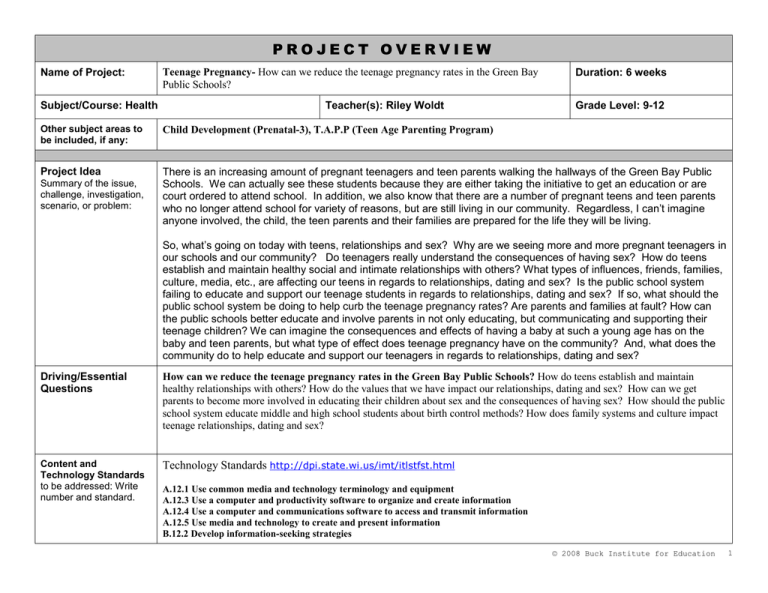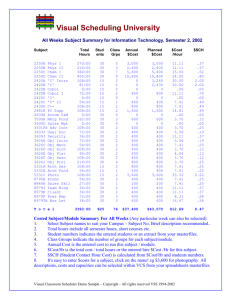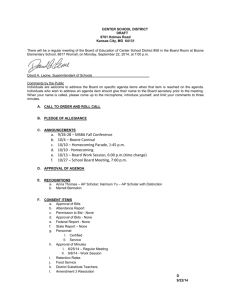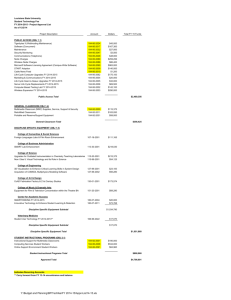
PROJECT OVERVIEW
Name of Project:
Subject/Course: Health
Teenage Pregnancy- How can we reduce the teenage pregnancy rates in the Green Bay
Public Schools?
Teacher(s): Riley Woldt
Duration: 6 weeks
Grade Level: 9-12
Other subject areas to
be included, if any:
Child Development (Prenatal-3), T.A.P.P (Teen Age Parenting Program)
Project Idea
There is an increasing amount of pregnant teenagers and teen parents walking the hallways of the Green Bay Public
Schools. We can actually see these students because they are either taking the initiative to get an education or are
court ordered to attend school. In addition, we also know that there are a number of pregnant teens and teen parents
who no longer attend school for variety of reasons, but are still living in our community. Regardless, I can’t imagine
anyone involved, the child, the teen parents and their families are prepared for the life they will be living.
Summary of the issue,
challenge, investigation,
scenario, or problem:
So, what’s going on today with teens, relationships and sex? Why are we seeing more and more pregnant teenagers in
our schools and our community? Do teenagers really understand the consequences of having sex? How do teens
establish and maintain healthy social and intimate relationships with others? What types of influences, friends, families,
culture, media, etc., are affecting our teens in regards to relationships, dating and sex? Is the public school system
failing to educate and support our teenage students in regards to relationships, dating and sex? If so, what should the
public school system be doing to help curb the teenage pregnancy rates? Are parents and families at fault? How can
the public schools better educate and involve parents in not only educating, but communicating and supporting their
teenage children? We can imagine the consequences and effects of having a baby at such a young age has on the
baby and teen parents, but what type of effect does teenage pregnancy have on the community? And, what does the
community do to help educate and support our teenagers in regards to relationships, dating and sex?
Driving/Essential
Questions
How can we reduce the teenage pregnancy rates in the Green Bay Public Schools? How do teens establish and maintain
healthy relationships with others? How do the values that we have impact our relationships, dating and sex? How can we get
parents to become more involved in educating their children about sex and the consequences of having sex? How should the public
school system educate middle and high school students about birth control methods? How does family systems and culture impact
teenage relationships, dating and sex?
Content and
Technology Standards
to be addressed: Write
number and standard.
Technology Standards http://dpi.state.wi.us/imt/itlstfst.html
A.12.1 Use common media and technology terminology and equipment
A.12.3 Use a computer and productivity software to organize and create information
A.12.4 Use a computer and communications software to access and transmit information
A.12.5 Use media and technology to create and present information
B.12.2 Develop information-seeking strategies
© 2008 Buck Institute for Education
1
B.12.4 Evaluate and select information from a variety of print, nonprint, and electronic formats
B.12.6 Interpret and use information to solve the problem or answer the question
B.12.7 Communicate the results of research and inquiry in an appropriate format
C.12.4 Demonstrate self-motivation and increasing responsibility for their learning
D.12.1 Participate productively in workgroups or other collaborative learning environments
D.12.2 Use information, media, and technology in a responsible manner
Health Standards http://dpi.state.wi.us/standards/pdf/health.pdf
A.12.6 Analyze how the family, peers, and community influence the health of individuals
B.12.1 Analyze the role of individual responsibility for enhancing health
B.12.3 Analyze the short-term and long-term consequences of various behaviors
B.12.4 Demonstrate strategies to improve and maintain personal, family, and community health
C.12.2 Apply knowledge of individual, family, and community influences to decision making processes
D.12.2 Demonstrate the ability to evaluate resources from home, school, and community that provide valid health information
E.12.2 Evaluate the effect of media and other factors on personal, family, and community health
F.12.1 Demonstrate skills to communicate effectively with family, peers, and others
T+A
21st Century Skills
to be explicitly taught and
assessed (T+A) or that
will be encouraged (E) by
project work, but not
taught or assessed:
Collaboration
X
Presentation
X
Critical Thinking:
X
E
T+A
E
Other:
Presentation Audience:
Group:
Culminating
Products and
Performances
Individual:
In class discussions, debate on birth control or pregnancy options, group research checklists
and charts, informative community wall (school display case and/or four walls of the health
rooms) for healthy relationships or birth control, PSA-birth control or STDs, surveys about
relationships and sex for 9, 10, 11, 12th graders with mini presentations, field trip with
empathy belly or baby think it over with short video and oral presentation, practice
presentations, group reflections/assessment, presentation to a real audience
Journal entries (check thought process), reflection cards (post activity), in class
discussion, individual research techniques and practice, video projects and mini
presentations
Class:
x
School:
x
Community:
x
Experts:
x
Web:
Other: Principals,
Social Workers, TAPP
© 2008 Buck Institute for Education
2
teacher and district
coordinator, outside
agency reps – Family
Services, Marion
House, Brown County
human Services
PROJECT OVERVIEW
Entry event to
launch inquiry,
engage students:
1. Pregnancy Dice Game – Each student is given a cup with a dice, roll dice six times and record the number that
appears. Teacher explains each roll represents number of times you chose to have unprotected sex. Teacher explains
every time someone chooses to have unprotected sex there is a 1:6 chance of getting pregnant. Teacher asks all
students who rolled a six to stand. Those students represent getting pregnant or getting someone else pregnant.
Teacher asks how they feel about becoming a teen parent. Teacher then asks all students who rolled a 6 on the first
attempt to stand. Teacher explains that the first time they chose to have sex they got pregnant or got someone
pregnant. This is a great time to discuss the myth that most teenagers believe-you can’t get pregnant the first time.
Then, teacher asks all students who rolled multiple 6s to stand. Ask students how they feel about getting pregnant
multiple times or getting someone else pregnant. At this point, can also go into STDs and do the same with the number
5. Finally, teacher asks all students who didn’t roll a 6 (and 5) if they would like to take a chance and roll again. If they
choose to roll and do not roll a 6 (and 5), provide them with a $1 bill. Teacher will do this until student stops or they roll
a 6 (or 5) then they lose. Oftentimes, classmates start pressuring student to take the risk and roll, continue to roll.
Process the influences of peer pressure regarding sex and sexual behaviors with class. Bottom line, the person taking
the risk eventually loses while the classmates lose nothing.
Assessments
Quizzes/Tests
Formative
Assessments
(During
Project)
Summative
Journal/Learning Log
Practice Presentations
x
Notes
x
Preliminary Plans/Outlines/Prototypes
Checklists
Rough Drafts
Concept Maps
Online Tests/Exams
Other: Multimedia presentations, oral
presentations, individual and group task
assessments
Written Product(s), with rubric:
Other Product(s) or Performance(s), with rubric:
Multimedia presentation
__________________________________________________
x
x
__________________________________________________
© 2008 Buck Institute for Education
3
Assessments
x
Peer Evaluation
x
Multiple Choice/Short Answer Test
Self-Evaluation
x
Essay Test
Other:
Oral Presentation, with rubric
(End of Project)
.
Resources
Needed
Reflection
Methods
On-site people, facilities:
School Board Member, Quadrant Leader, Principal(s), Guidance
Counselors, Janine Krajnik-Social Worker, Ann Reiser-TAPP, Computer
Lab
Equipment:
Classroom set of mini laptops, headphones, microphones, presentation
equipment
Materials:
Wiki – online resources, hard copy notes and brochures
Community resources:
Stacy Lewis-Golden House, Brown County Human Services-Jenny
Hoffman, Brown County Health Dept.-Erin Tisch, Marion House-Beth
Davis
(Individual,
Group, and/or
Whole Class)
Journal/Learning Log
x
Focus Group
x
Whole-Class Discussion
x
Fishbowl Discussion
x
Survey
x
Other:
© 2008 Buck Institute for Education
4
PROJECT TEACHING AND LEARNING GUIDE
Project: Reducing Teen Pregnancy in Green Bay Public Schools
Course/Semester: Health/6 weeks at the end of each semester
Knowledge and Skills Needed by Students (Learning Targets)
to successfully complete culminating products and
performances, and do well on summative assessments
Students will need to know how to think critically and
express themselves both in written and oral form.
Scaffolding / Materials / Lessons to be Provided
by the project teacher, other teachers, experts,
mentors, community members
Students will need to know how to collaborate.
Students will need to know how to search and
research important, relevant information, cite sources
and reflect, summarize what they learned.
Provide “critical thinking and lively discussion” (CTLD)
format (see procedure above) on a consistent basis, small
group projects throughout the PBL and final presentation
at the end of the unit.
Provide multiple research and reflection days using
resources that I provide via classroom Wiki and others
that they find.
Interview an expert project to brainstorm and explain 10
solutions to how teen establish and maintain healthy
relationships with others.
Using Survey Monkey, brainstorm and compile
questions, create a survey to distribute to target audience
Students will need to know how to interview people.
Students will have to create, distribute and compile
information retrieved from surveys
I will teach, model and have the students practice through
what I call our “critical thinking and lively discussion”
(CTLD) format: 1. Pose question(s) and students journal
(rubric provided), 2. Students test their thoughts/theories
in small group discussions (progress checklist), 3. Come
back to report out and whole group discussion.
Sometime afterwards, students will reflect on what
they’ve learned. This will be one of our primary modes
of learning and will happen a number of times throughout
the PBL.
© 2008 Buck Institute for Education
5
and present findings.
Students will create a multimedia presentation
Multiple multimedia presentation include PPT, Photo
Story, Movie Maker, Brochures, PSA throughout and up
to the final.
Students will give oral presentations
Through community wall presentations, small
multimedia presentations throughout and the final
presentation.
Students will be able to debate with others and support
opinion with facts
Through article research, students will be able to
collaborate and express themselves of their opinions on
how schools should teach sex ed (abstinence vs. birth
control in public education).
Students will need to know how to access online
resources, especially my Wiki
Reading and research activities throughout PBL.
© 2008 Buck Institute for Education
6
P R O J E C T
Project: Reducing the rate of teenage pregnancy in the GBPS
M O N D A Y
T U E S D A Y
C A L E N D A R
Start Date: 6 weeks prior to end of the semester
Class Period (Length): 52 minutes
W E D N E S D A Y
T H U R S D A Y
F R I D A Y
PROJECT WEEK ONE
Day 1
Objective: Introduce
essential question and
brainstorm potential
solutions, introduce and
practice “critical thinking
and lively discussion”
(CTLD) format.
Day 2
Obj: Teach students how
to read and research
relevant information
related to teenage
pregnancy, cite sources
and reflect on learning.
Day 3
Obj: Brainstorm and
explain a minimum of 10
solutions to how teens
establish and maintain
healthy relationshipsActivity.
Day 4
Obj: Brainstorm and
explain a minimum of 10
solutions to how teens
establish and maintain
healthy relationshipsVideo.
Day 5
Obj: Brainstorm and
explain a minimum of 10
solutions to how teens
establish and maintain
healthy relationshipsGuest Speaker.
Activities: see below Day 1
Act: see below – Day 2
Act: see below – Day 3
Act: see below – Day 4
Act: see below – Day 5
Assessment: Journal
entry (rubric), progress
checklist
Assessment: Journal
entry, progress checklist,
reflection (rubric)
Assessment: Journal
entry, progress checklist,
reflection
Assessment: Reflection
Assessment: Reflection
PROJECT WEEK TWO
Day 6
Obj: Brainstorm and
explain a minimum of 10
solutions to how teens
establish and maintain
healthy relationshipsResearch.
Day 7
Obj: Brainstorm and
explain a minimum of 10
solutions to how teens
establish and maintain
healthy relationshipsInterview.
Act: Research articles on
Wiki-Healthy Relation. &
Dating, CTLD, Create
classroom grid
Act: Introduce interview
skills (tips on Wiki), demo
and role play with
partner, CTLD-interview
questions for experts,
assign interviews (due 3
days)
Assess: Progress checklist
Day 8
Obj: Explain what types of
influences and how each
effect a teen’s decision to
engage in sexual activity.
Act: show video-Truth
About Sex, journal entry:
first experiences talking
about sex (bird & bees
talk w/ parent), what has
school taught you and
when, how does media,
peers influence teens,
Day 9
Obj: Explain what types of
influences and how each
effect a teen’s decision to
engage in sexual activity
and define, label
reproductive anatomy.
Day 10
Obj: Brainstorm and
explain a minimum of 10
solutions to how teens
establish and maintain
healthy relationshipsInterview.
Act: Fishbowl w/journal
entry, physical intimacyhow does it all work;
reproductive anatomy pre
knowledge act,
reproductive anatomy
notes, post knowledge act
Act: small group
discussions with interview
groups, report out finding,
whole class collaboration
to compile and display
final list of 10 solutions to
DQ
Assess: Journal entry
© 2008 Buck Institute for Education
7
Assess: Progress checklist
Assess: Progress checklist
Assess: progress checklist
PROJECT WEEK THREE
Day 11
Obj: Compile a list of
questions for peer groups
regarding dating and sex.
Day 12
Obj: Create a short PPT.
presentation on findings
from surveys.
Act: CTLD-how often do
teens talk about sex?
Intro-survey monkey (link
on Wiki, small groups:
identify target group,
brainstorm 5 questions,
create survey and
distribute 8 surveys
Act: small group
collaboration on findings
of target group, compile a
short PPT presentation on
findings: questions, data,
possible chart, etc.,
present
Assess: progress checklist
Assess: multimedia
presentation
Day 13
Obj: Identify what values,
where they came from
and evaluate how they
play a role in
relationships, dating and
sex.
Day 14
Obj: Identify what values,
where they came from
and evaluate how they
play a role in
relationships, dating and
sex.
Day 15
Obj: Identify what values,
where they came from
and evaluate how they
play a role in
relationships, dating and
sex.
Act: journal questions and
short whole class
discussion: what values
do you have, where do
you get them from, how
do your values influence
your decisions about
relationships, dating and
sex? Bring in photos
Act: intro, demo Photo
Story, work day: create
Values Photo Story (see
“Values Photo Story’”)
below
Act: Model presentation,
Presentations, Reflectionwhat did you learn about
yourself
Assess: progress checklist
Assess: Multimedia rubric,
reflection
Day 19
Obj: whole class
collaboration to create
one community wall in
school display caseBuilding Healthy
Relationships
Day 20
Obj: whole class
collaboration to create
one community wall in
school display caseBuilding Healthy
Relationships
Act: whole class selection
of material, distribution of
roles/responsibilities,
creation
Act: finishing touches,
reflection-collaboration,
journal-brainstorm and
write questions for TAPP
panel
Assess: progress checklist
Day 16
Obj: In groups, create a
community wall detailing
how teens establish and
maintain healthy
relationships with others.
Day 17
Obj: In groups, create a
community wall detailing
how teens establish and
maintain healthy
relationships with others
Act: small group
brainstorm what goes on
in class community wall,
how to organize, delegate
roles and responsibilities,
work time
Act: In class community
wall work day
Assess: progress checklist
Assess: progress checklist
Day 18
Obj: Present in class
community wall
Act: Present in class
community wall, invite:
Principal(s), Guidance
Counselor(s) and Social
Worker, complete group
collaboration rubric
Assess: Group
Collaboration rubric, oral
presentation rubric
Assess: progress checklist
Assess: reflection
© 2008 Buck Institute for Education
8
Day 21
Obj: Identify
consequences of sex both
now and in the future.
Day 22
Obj: Identify
consequences of sex both
now and in the future.
Day 23
Obj: Identify
consequences of sex both
now and in the future.
Day 24
Obj: Identify
consequences of sex both
now and in the future.
Day 25
Obj: Identify
consequences of sex both
now and in the future.
Act: TAPP guest speakers:
relationships to now,
dating sex, etc., anxieties,
life change?, future?
Support? Advice?
Act: Field trip with TAPP
class, Child Dev. Class:
Group 1: equip with
empathy belly, video
recorder and task list,
Group 2: equip with Baby
Think it Over, video
recorder and task listidentify roles
Act: small group
collaboration-reflection:
what did you learn, put
together a multimedia
video using Animoto or
Movie Maker
Act: show videos, show
birth videos: clips of Look
who’s talking, From
conception to birth,
journal entry: birth
Act: Assign individual with
STD to research
(resources on Wiki), small
group collaboration on
common STD, fishbowl,
record for a complete list
(eventually put in Moodle)
Assess: reflection
Assess: journal entry
Assess: progress
checklist, Multimedia
presentation
Assess: progress checklist
Assess: progress checklist
Day 26
Obj: Identify
consequences of sex both
now and in the future.
Act: finish collaboration,
fishbowl with recorder,
reflection-how does
choosing to become
sexually active in/out of
relationships effect selfesteem, behaviors and
relationships? (eventually
put in Moodle-discussion
question)
Day 27
Obj: Identify, debate and
evaluate the best way for
public schools to educate
youth on birth control
methods.
Day 28
Obj: Identify, debate and
evaluate the best way for
public schools to educate
youth on birth control
methods.
Day 29
Obj: Identify, debate and
evaluate the best way for
public schools to educate
youth on birth control
methods.
Act: provide info (from
Wiki) 2010 national
survey result, pick a side,
read article for
opinions/data (on WikiBirth Control), CTLD-how
should public schools best
educate teens about birth
control and why?
Act: in class debate,
reflection-good, bad,
frustrating, what did you
learn?
Act: Preview PSA (on
Wiki), hard copy of
brochure, small groups
choose PSA or brochure
about STDs or Birth
control
Assess: Reflection
Assess: PSA and Brochure
rubrics
Assess: research rubric,
reflection card (eventual
discussion rubric)
Assess: Journal entry,
progress checklist
Day 31
Obj: Collaborate and
create final presentation
Day 32
Obj: Collaborate and
create final presentation
Day 33
Obj: Collaborate and
create final presentation
Act: final video for
inspiration: clips MTV’s 16
Act: work day
Act: work day
Day 34
Obj: practice final
presentation, peer
reviews
Day 30
Obj: Review of work and
creating final presentation
Act: listen to PSA, show
brochures, go back to
Essential Question and
review possible solutions,
review what we’ve
learned and projects
we’ve accomplished, add
to the grid from what we
know now? Present final
presentation and provide
rubric, small group
brainstorming,
organization, roles and
responsibilities
Assess: progress checklist
Day 35
Obj: Collaborate and
create final presentation
Act: work day
Act: practice presentation,
© 2008 Buck Institute for Education
9
and Pregnant, resource to
review from Wiki
(Teenage pregnancy
sites), work time
Assess: progress checklist
Assess: progress checklist
peer review
Assess: progress checklist
Assess: Peer reviews for
presentation using final
project rubric
Assess: Progress checklist
Day 36
Obj: Present final project
to real audience
Act: Presentation with
real audience
Assess: final presentation
rubric, individual task and
group task rubric
NOTES: future?
Additional? In place of?
Dating philosophy paper,
Get this on Moodle or at
least parts on Moodle
(discussion, reflections),
work with Video
Productions class
Day 1
Objective: Hook students, Introduce essential question and brainstorm potential solutions, introduce and practice
“critical thinking and lively discussion” format.
Activities:
1. Entry activity-dice game
2. Short whole class discussion with teen pregnancy questions like: do you know people who are teen parents
or pregnant, imagine what their lives might be like, describe what your life would be like if you were
pregnant or got someone pregnant or are a teen parent, explain how this would also affect/change your
future
3. Read aloud Green Bay Press Gazette article about teen pregnancy stats for Brown County (possible? Have
skype session with superintendant or invite principal to class to present essential question-PBL)
4. Present essential question and teach, model and practice “critical thinking and lively discussion” (CTLD)
format: 1. Pose the individual journal question(s) to provoke deeper level of thinking, 2. Test individual
thoughts/theories in small group discussions, 3. Come back to report out and have whole group discussion,
have a recorder write potential solutions to essential question on large display chart (to be left in room
throughout PBL and eventually typed, printed and pasted into individual journals-constant visuals for focus)
5. Parking lot questions posted on the board for future reference and guidance
© 2008 Buck Institute for Education
10
6. Assignment-have a discussion with at least one other person about essential question and be ready to
discuss/report on tomorrow
Assessment: Journal entry, progress checklist
Day 2
Objective: Teach students how to access my Wiki for resources, teach students how to read and research relevant
information related to teenage pregnancy, cite sources and reflect on learning.
Activities:
1. Whole Class discussion on who they had conversations with and what information is relevant for our essential
question. Add to our classroom grid if needed.
2. Provide and paste mini copies of grid in journals (or next day activity).
3. Teach students how to access my Wiki for resources (www.rlwoldt25.wikispaces.com, Health class).
4. Assign students an article to read in Wiki under Teenage Pregnancy.
5. CTLD format – What are the issues related to teenage pregnancy? What types of solutions do the articles offer?
6. Assign: reflection card (with rubric) – summarize what you’ve learned today.
Assessment: Journal entry, Progress checklist, Reflection card
Day 3
Objective: Brainstorm and explain a minimum of 10 solutions to how teens establish and maintain healthy
relationships.
Activities:
1. Lots of Fish in the Sea Activity
2. CTLD format: What do people look people look for in others when dating, Why do people stay in relationships
that have issues, What types of problems does this type of relationship lead to, What are they missing, DQ-how
do teens establish and maintain healthy relationships with others
3. Reflection Card
4. Assign: Create a Date Activity
Assessment: Journal entry, progress checklist, reflection card
© 2008 Buck Institute for Education
11
Day 4:
Objective: Brainstorm and explain a minimum of 10 solutions to how teens establish and maintain healthy
relationships.
Activities:
1. Share Create a Date
2. Whole class collaboration on creating a list on the wall of “Ideas for Dates by Teens.”
3. Introduce Community Wall idea, assign groups to a wall in the classroom
4. Show short video, Intimate Teen Relationships
5. Define Intimacy: physical, cognitive and emotional
6. Reflection card-add to our DQ.
Assessment: Reflection card
Day 5:
Objective: Brainstorm and explain a minimum of 10 solutions to how teens establish and maintain healthy
relationships.
Activities:
1. Guest Speaker: Stacy Lewis, Golden House, Green Bay. Topic-Healthy vs. Unhealthy Relationships
2. Reflection card-summarize what you learned today and what you could add to DQ.
Assessment: Reflection card
Values Photo Story (Mulitmedia Rubric will also be provided)
Example:
Slide 1-Introduce yourself
2-What values do you hold
3-8 – Where did you get your values from, be specific
9-How do you manage the “pressures” as a teen
10-What are your struggles
11-How do your values influence your decisions about relationships, dating and sex
© 2008 Buck Institute for Education
12
Progress Checklist
Student
Contribution
Period:
Comprehension
Date:
Comments
© 2008 Buck Institute for Education
13







